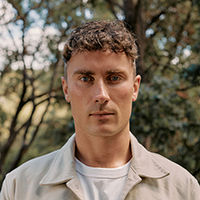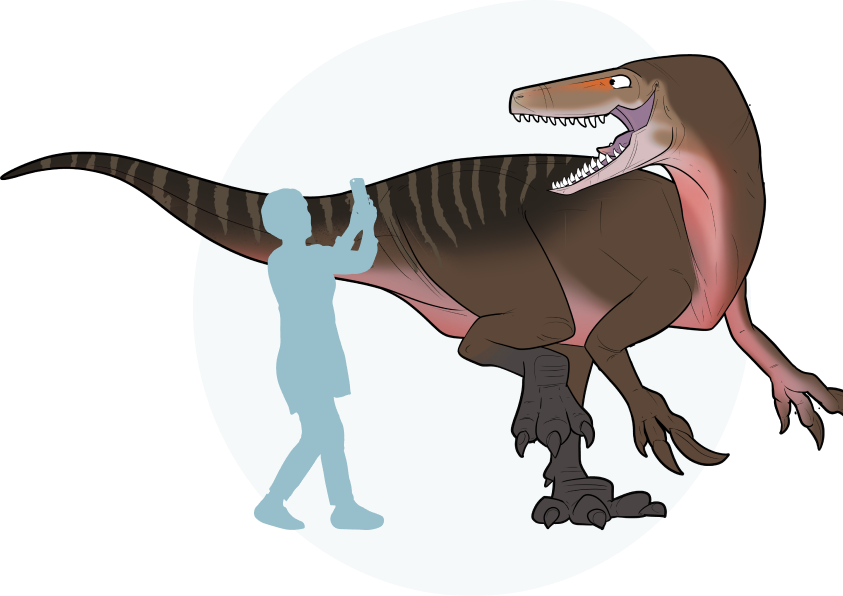Eagles Nest
Auditory Adventure








As visitors explore the site, they will encounter a series of sound bites. These immersive auditory experiences awaken curiosity, provoke thought, and encourage wonder. Each experience will foster the ability to look at what is familiar, from unfamiliar angles. Stairs to the beach become the bridge between today and the time of the dinosaurs; striations in rock become an alphabet to read; items buried in stone become fossils. Above all, this immersive musical and poetic experience leads visitors to their own ways of looking. They will be encouraged to look differently at the world, in towards their own ‘heart voice’, and at how the connections between the two underpin environmental stewardship.
A range of fossilised remains, in addition to bones and teeth, continue to be found along the Bass Coast – shells, feathers, leaves, invertebrates, burrows and footprints. Fossils provide insights in to the diversity of plants and animals that once lived alongside polar dinosaurs. Knowing these remains of life are buried in rock, in the very ground on which we stand, reminds us that Country connects us all, regardless of time. The Bunurong, the Traditional Custodians of the Bass Coast area, have cared for Country for thousands of years. This same Country contains these diverse fossil remains. Country, continues supports all life today, and into the future. Whilst the fossil record documents the past, the future is yet to be written.
"Over several site visits, I took field notes, met with palaeontologists, and immersed myself in the environment in a way that modelled the visitor experience. I also read books and pamphlets on the area's prehistoric flora and fauna. From this information, I drafted a poem that aimed to be both informative and evocative."

Poet
As visitors arrive, this first sound bite sweeps them back to the Cretaceous period, 125 million years, ago when polar dinosaurs and diverse other animals thrived. It invites listeners to consider how much the coast has changed, and how its rock still hides evidence of its ancient past. This experience aims to evoke wonder, to draw attention to the area’s status as an active fossil site, and to contemplate what lessons this ancient past can teach us about the future.
This auditory experience will further tune-in visitors to the site, dilating their senses and cultivating cultivate a keen, compassionate awareness—‘a way of looking’—that will enhance the rest of their visit. As listeners approach the cliff edge, they also approach ‘the cliff edge moment’. The musical composition and poetry gently reaches a crescendo, and the listener looks out over the site; mirroring their newly awakened curiosity. Throughout this part of the experience, the listener is invited to consider how such awareness is intrinsic to being human, and vital to our survival.
This auditory experience turns to the future. It considers the collective responsibility humans have towards each other, and the natural environment. Approaching the Eagles Nest monolith, near the site of Australia’s first dinosaur fossil discovery, listeners will view their surroundings as ‘an alphabet’. They are encouraged to explore the rock for what others may have missed: a fossil, or perhaps an idea, hiding in plain sight. By the end of this sound bite, listeners will have developed a fuller appreciation of how, much like the fossils around them, they form part of a complex and beautiful whole. The musical composition and poetry aim to convey this complexity and beauty, and leave listeners with a sense of agency and hope.

Visitor are invited to explore a virtual fossil field. Through careful observation, and a bit of luck, they will find and identify a diversity of tracks, footprints, bone fragments, jaws, teeth, leaves and feathers. Each virtual fossil is based on real fossils found along the Bass Coast. Hidden amongst the virtual fossils, is the Cape Paterson Claw. This fossil was Australia's first dinosaur fossil ever discovered, and was found at Eagles Nest in 1903.

We do not know the species of this giant meat eater, however we do have enough bone fragments and footprints to show that it lived around 125 million years ago. Fossils tell palaeontologists that it belonged to the Megaraptor family, very similar to Australovenator wintonensis. Megaraptorans are know for their strong grasping claws, legs built for speed, and pneumatic (air filled) bones. Birds, also have air-filled bones, and are believed to be related to Megaraptorans. In fact, some scientists believe birds are so closely related to dinosaurs, they consider birds to be living dinosaurs!
Theropod dinosaur - Carnivore
I played guitar for hours, slicing notes and transforming them through synthesis, crafting something new yet organic. Like fossils, the process resembled nature's preservation, followed by exploration and reconstruction.

Musician
Visitor Spending Per Year
Full Time Jobs Created
Economic Boost During Construction
Creative development with Bunurong
Refinement of existing compositions and creation of fourth
Recruitment of illustrator
Development of illustration/animation to support content
Work ready to be uploaded to platform
Development of platform

